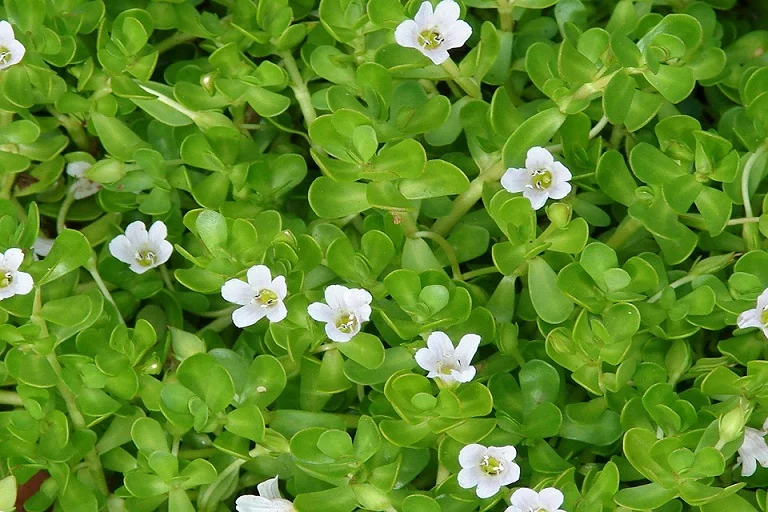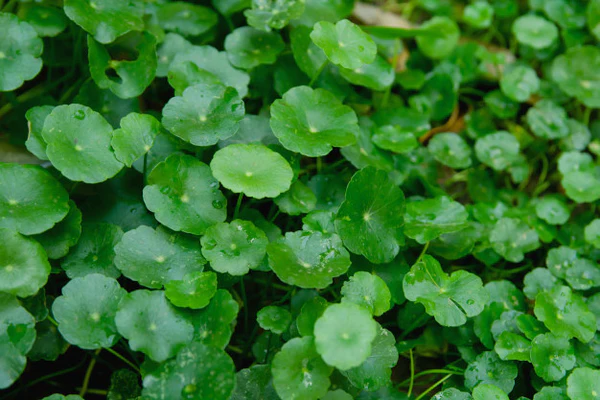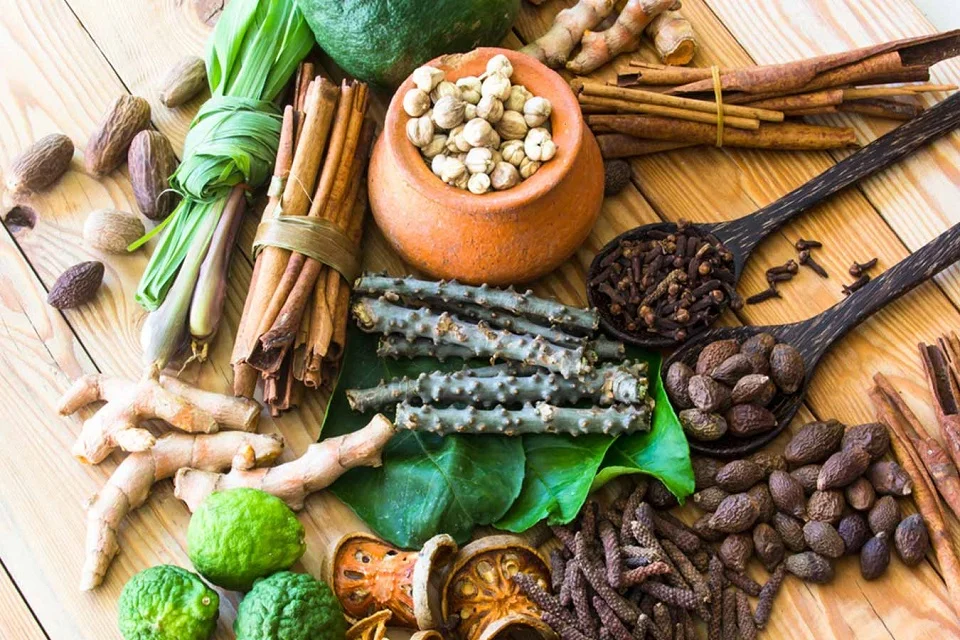Benefits of Brahmi, dosage, side effects, and how to use?
What is Brahmi? Brahmi, scientifically Bacopa monnieri, is a revered herb in Ayurveda, celebrated for the cognitive benefits of Brahmi. Modern …

What is Brahmi?
Brahmi, scientifically Bacopa monnieri, is a revered herb in Ayurveda, celebrated for the cognitive benefits of Brahmi. Modern studies explore its impact on memory and neuroprotection. Its name, derived from “Brahma,” signifies its historical association with cognitive enhancement. Ayurvedic tradition touts the benefits of Brahmi for its role in pacifying all three doshas, promoting mental clarity and stress relief. This article navigates Brahmi’s historical roots, traditional uses, and current scientific discourse, offering a balanced perspective on its significance in both Ayurveda and contemporary cognitive research
What is Morphology of Brahmi?

Latin name– Bacopa monnieri
(Linn.) Wettst., Syn. Herpestis monnieria (Linn.) H.B. & K. (Fam. Scrophulariaceae)
Bacopa monnieri glabrous, punctate, succulent herb. Leaves- sessile, obovate or spathulate, entire. Flowers are solitary, axillary, white; and bracteoles linear. Its Fruits are ovoid, acute, acute capsules included in the persistent calyx. Flowers and fruits almost throughout the year (mainly between February-April). It is Commonly found in moist places throughout India.
Type of Brahmi
Sodhala mentioned Brähmi and Mandüka Brahmi separately. Raja Narahari mentioned Brahmi alone.
Synonyms
Sarsvati, Kapotvanka
Classical Categorization
Charak: Prajasthapana
Other/Regional Language Names
- English: Thyme Leaved Gratiola
- Gujarati: Neerbrahmi, Bamanevari
- Hindi: Manduka Parni
- Kannada: Nirubrahmi, Valabrahmi, Ondelaga, Mandukaparni
- Malayalam: Bhahmi
- Marathi: Jalnam, Brahmi, Birami
- Oriya: Brahmi
- Punjabi: Brahmibuti
- Tamil: Nirabrahmi, Brahmi vazhukkai
- Telugu: Sambarenu, Sambrani
- Urdu: Brahmi
- Assamese: Brahmi
Constituents
Ascorbic acid, nicotinic acid, brahmine, herpestine, alanine, hentri-acontane, octacosane, monnierin (saponin), hersaponin, bacoside A & B, bacogenins A,-A, (Sapogenins), B-sitosterol, etc.
Rasa Panchak
- Rasa:Tikta, Kashya, Madhura
- Guna: Laghu, Sara
- Virya: Shita
- Vipaka: Madhura
- Karma: Vata-Kapha hara, Rsayana, Ayushya, Medhya, Mati-prada, Svarya, Prajasthapana, Vishahara, Mohahara.
References in Ayurvedic texts
ब्राह्मी इति दशेमानि प्रजास्थापनानि भवन्ति ।
(च० सू० 4/49)
अष्टरात्रोपोषितो ब्राह्मीमुत्थाप्य ……. सहस्रकृत्वः प्राश्नीयात् श्रुतनिगदी भवति ।
पुष्पाणि वास्याः उदकेन संवत्सरं पक्केन प्राश्नीयात् श्रुतनिगादी भवति ।
(सा. २/७/४-५)
विसंस्मृतिं ब्राह्मी
(अ.हृ. उ. ४०/५१)
ब्राह्मी सोमा विनिर्दिष्टा दिव्यतेजा महौषधी ।
कपोतवेगा त्वष्टा च सैव ब्रह्मसुवर्चला ।।
ब्राह्मी सौम्या रसे तिक्ता शोफपाण्डुज्वरापहा ।
दीपनी कुष्ठकण्डूघ्नी प्लीहवातबलासजित् ।।
(ध० नि० करवीरादिवर्ग 89, 90)
ब्राह्मी शीता सरा तिक्ता कषाया मधुरा लघुः ।
मेध्या स्वर्या स्वादुपाका हद्यायुष्या रसायनी ।।
मतिस्मृतिप्रदा हन्ति कुष्ठकण्डूज्वरं मलान्।
शोफारुचिविषश्वासकासमोहास्रपाण्डुता:।।
(कै.नि. औषधि वर्ग 722, 723)
ब्राह्मी कपोतवमा च सोमवल्ली सरस्वती ।
मण्डूकपर्णी माण्डूकी त्वाष्ट्री दिव्या महौषधी।।
ब्राह्मी हिमासरा तिक्ता लघुर्मेध्या च शीतला ।
कषाया मधुरा स्वादुपाकाऽऽयुष्या रसायनी।।
स्वर्या स्मृतिप्रदा कुष्ठपाण्डुमेहास्रकासजित् ।
विषशोथज्वरहरी तद्वन्मण्डुकपर्णिनी ।
(भा०प्र०नि० गुडूच्यादिवर्ग 279-282)
ब्राह्मी हिमा कषाया च तिक्ता वातापित्तजित् ।
बुद्धि प्रज्ञ च मेधां च कुर्यादायुष्यवर्द्धनी ।।
(रा०नि०पर्पटादिवर्ग 66)
What are Benefits of Brahmi?
- Kushtha
- Jvara
- Shopha
- Pandu
- Prameha
- Manasvikara
What is the use of Brahmi in texts?
- Masürikä- Juice of Brahmi is given with honey (V.M.).
Brahmi benefits for brain
- Unmada- Brähmi juice mixed with Kustha and honey will be useful (V.M. & Sä. Sam. 2/01/18).
- Apasmara- Oil, Lasuna, Śatavari (with milk), juice of Brahmi, Kuştha, and Vacă are taken with honey (C.S.Ci. 10)
How much is Dose?
1-3 gm in powder form.
What are the Useful Part?
Panchang (Whole plant)

What are the side effects of Brahmi?
- Increased stomach motility
- Stomach upset
- Side effects are of taking the drug in high doses, under the guidance of qualified vaidya, or in appropriate doses it is safe to consume.
Additional information
List of formulations
- Brahmi rasayana
- Sarsvatarishta
- Brahmi ghrita
- Smiritsagar rasa
Morphology -Kshup (Plant)
Research
- Brahmi in Alzheimer’s Disease
- The crude alcoholic extract (10-200 mg/100 gm b.w.) had a sedative effect on frogs and dogs. The extract also possesses cardiotonic, vasoconstrictor, and neuro-muscular blocking ac- in frogs. A glycoside (saponin) was also found to have cardiotonic action in normal as well as hypodynamic frog heart (Malhotra & Das 1959).
- Alcoholic extract of the whole plant (50 mg/kg i.p.), exhibited a tranquilizing effect on albino rats. The same effect was observed in dogs. When the above dose was given i.v. The extract showed smooth muscle relaxation of the rat ileum. At 20 mg/kg, a transitory fall in BP was seen (Aithal & Sirsi, 1961).
- The total alkaloidal fraction (0.2-2.0 mg/kg i.v.), produced an initial fall followed by a rise in the BP of dogs. An initial stimulation of respiration was followed by slight depression. Tachyphylaxis was observed with repeated administration of the drug. The alkaloidal fraction had a spasmodic effect on the isolated ileum of rabbits (Das et al., 1961).
- Hersaponin showed a sedative effect in mice. It did not protect rats against electroshock and mice against metrazol seizures (Malhotra et al., 1960 & 1962).
- Hersaponin was also found to deplete the rat brain of its noradrenaline and 5-HT content, the action being similar to that of reserpine (Malhotra et al., 1961).
- A dose of 10 mg/kg i.p. of alcoholic extract improved the process of motor learning in rats (Prakash & Sirsi, 1962).
- The tranquilizing property of the extract was found to be weaker than that of chlorpromazine (Ganguly & Malhotra,1967 & 1969).
- The alcoholic extract of the whole plant was found to have anti-cancer activity against walker carcinosarcoma 256 (i.m.) in rats. (Bhakuni et al., 1969).
- Plant extract showed significant barbiturate hypnosis potentiation in rats (J. Res. Ind. Med. Yoga & Homoeo. 1979, 14, 1).
- Brahmi (40 mg/kg. p.o. for 3 or more days) – treated rats showed better acquisition, improved retention, and delayed extinction (J. Ethnopharmacol. 1982, 5, 205).
Conclusion
In conclusion, Brahmi stands as a cornerstone in the tapestry of Ayurvedic herbs, celebrated for its historical role in cognitive well-being. While Ayurveda reveres it as a holistic remedy, modern science continues to unravel its cognitive benefits. The nuanced discourse acknowledges Brahmi’s potential but urges further research for conclusive evidence. Balancing tradition and contemporary exploration, this article sheds light on Brahmi’s significance, urging readers to appreciate its rich heritage while remaining open to evolving scientific insights. The journey through Brahmi’s past and present underscores the dynamic interplay between ancient wisdom and modern exploration in the realm of Ayurveda and cognitive health.








Got Something To Say